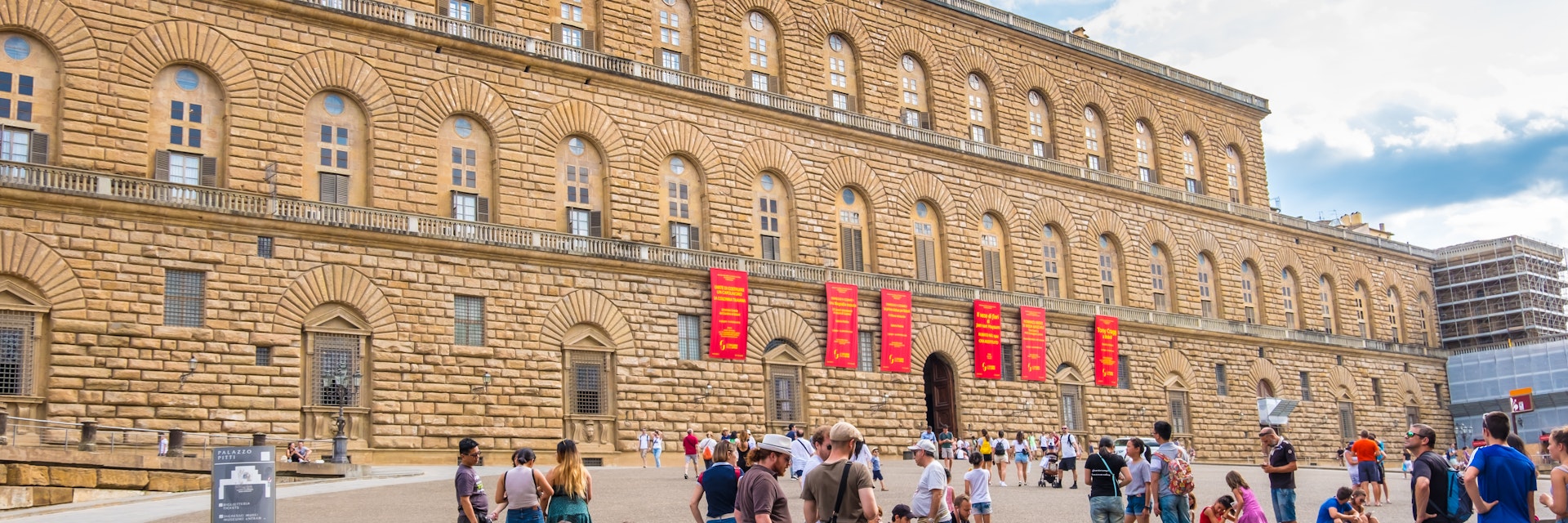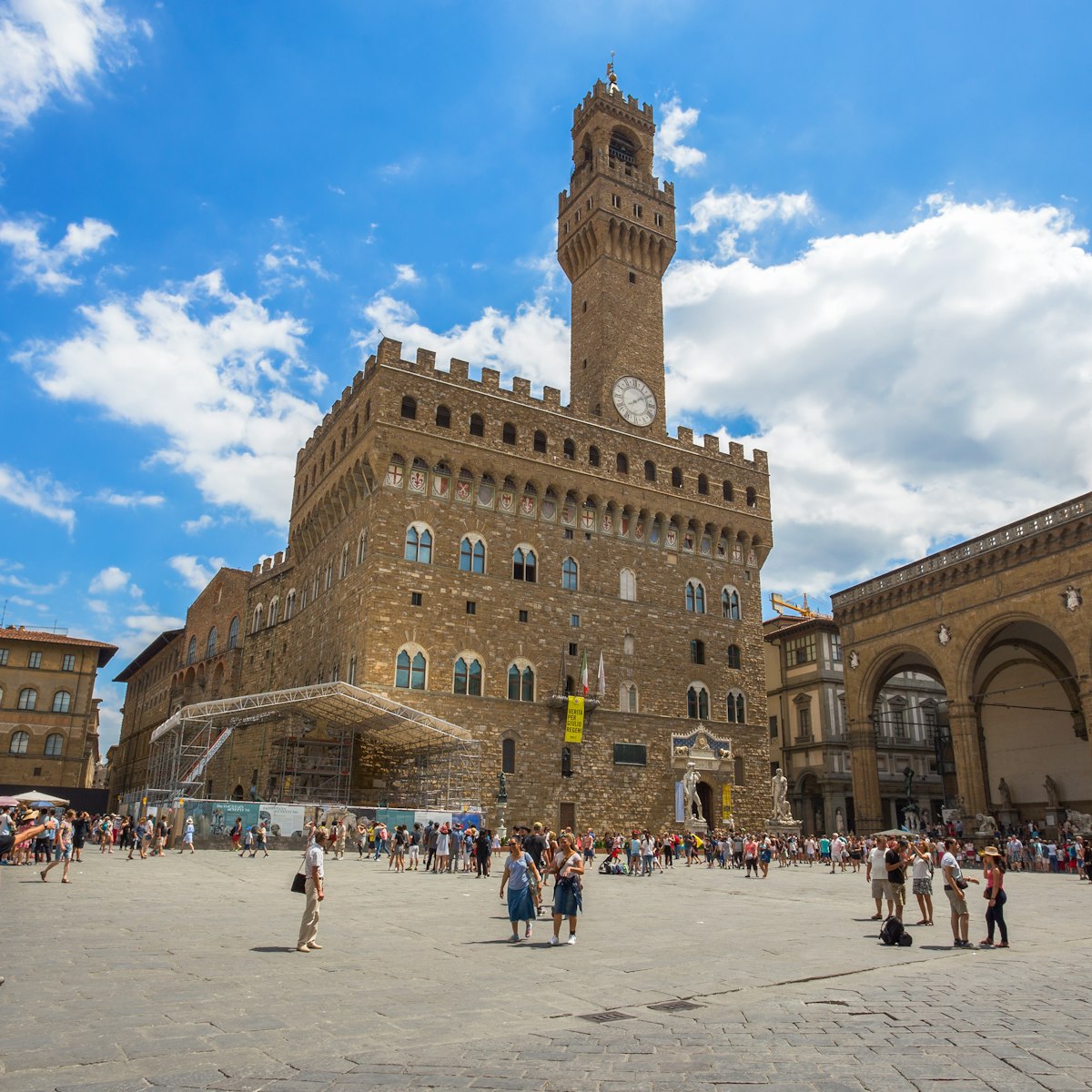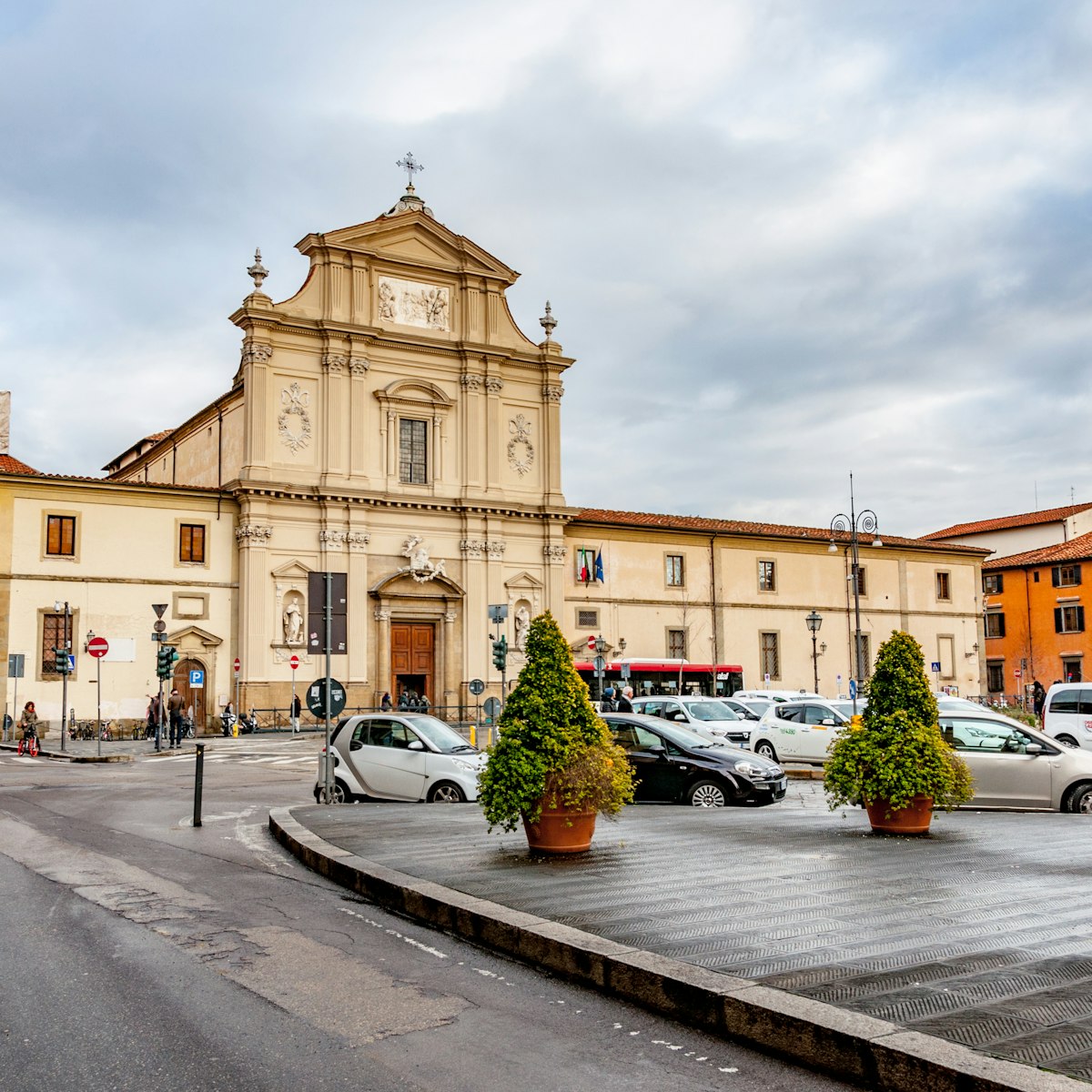Commissioned by banker Luca Pitti in 1458, this Renaissance palace was later bought by the Medici family. Over the centuries, it was a residence of the city's rulers until the Savoys donated it to the state in 1919. Nowadays it houses an impressive collection of silver and jewellery, a couple of art museums and a series of rooms recreating life in the palace during House of Savoy times. Stop by at sunset when its entire facade is coloured a vibrant pink.
Ground Floor
Exquisite amber carvings, ivory miniatures, glittering tiaras and headpieces, silver pillboxes and various other gems and jewels are displayed in the Tesoro dei Granduchi, a series of elaborately frescoed audience chambers, also known as Museo degli Argenti (Silver Museum). Notable (but not always open) is the Sala di Giovanni da San Giovanni, which sports lavish head-to-toe frescoes (1635–42) celebrating the life of Lorenzo Il Magnifico – spot Michelangelo giving Lorenzo a statue. 'Talk little, be brief and witty' is the curt motto above the painted staircase in the next room, the public audience chamber, where the grand duke received visitors in the presence of his court.
1st Floor
Raphaels and Rubens vie for centre stage in the enviable collection of 16th- to 18th-century art amassed by the Medici and Lorraine dukes in the Galleria Palatina, reached by several flights of stairs from the palace's central courtyard (bear right from the main entrance). This gallery has retained the original display arrangement of paintings (squeezed in, often on top of each other), so it can be visually overwhelming – go slowly and focus on the works one by one.
Highlights in the Sala di Prometeo include Fra' Filippo Lippi's Madonna and Child and the Birth of Virgin Mary (1452) and Botticelli's Portrait of a Woman (c 1475–90), thought to be a portrait of Simonetta Vespucci, lover of Giuliano de' Medici, and one of the gallery's oldest portraits. Admire Raphael's Madonna of the Window (1513–14) in the Sala di Ulisse; and Caravaggio's brutally realistic Sleeping Cupid (1608) in the Sala dell'Educazione di Giove. Don't miss the Sala di Saturno, full of magnificent works by Raphael, including the Madonna of the Chair (1513–14), Madonna and Child (c 1505–06) and Madonna and Child enthroned with Saints (1507–08). Next door, in the Sala di Giove, the same artist's Lady with a Veil (aka La Velata; c 1516) holds court alongside Giorgione's Three Ages of Man (c 1500).
Past the Sala di Venere are the Appartamenti Reali, a series of rooms presented as they were c 1880–91 during House of Savoy times.
2nd Floor
The Galleria d'Arte Moderna curates 18th- and 19th-century works. Paintings of the Florentine Macchiaioli school (the local equivalent of Impressionism) dominates the collection.
Crowning the palace is the Museo della Moda e del Costume, host to some colourful temporary exhibitions with a fashion focus.
Cent-saver alert: buy your Palazzo Pitti ticket before 8.59am and actually enter the palace before 9.25am to get a 50% reduction on the ticket price.








